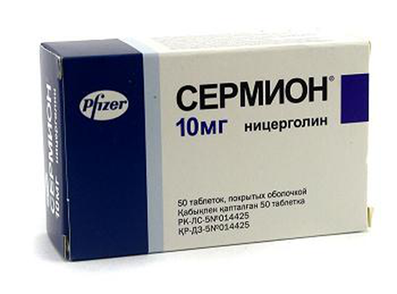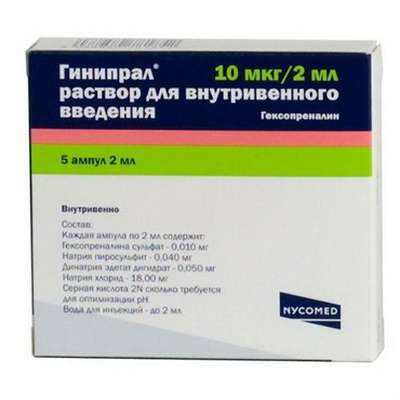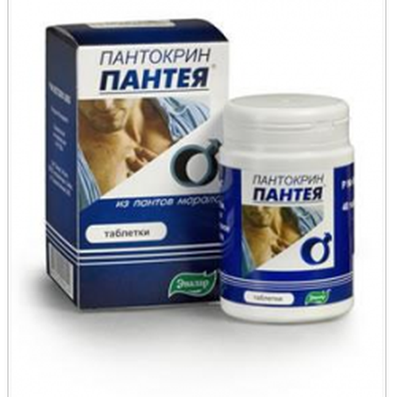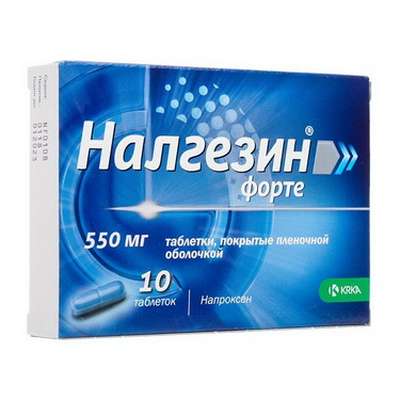Instruction for use: Mircera
I want this, give me price
Dosage form: Solution for intravenous and subcutaneous administration
Active substance: Epoetinum beta [methoxypolyaethylenglycolum]
ATX
03XA03 Methoxypolyethylene glycol epoetin beta
The nosological classification (ICD-10)
D63.8 Anemia in other chronic diseases classified elsewhere: Anemia in chronic diseases; Anemia in immunological disorders; Anemia in peptic ulcer; Anemia in kidney diseases; Anemia with HIV treatment; Anemia in the background of chronic renal failure; Anemia in patients with myeloma; Symptomatic anemia; Symptomatic anemia of renal genesis; Anemia in HIV-infected patients; Renal anemia
Composition and release form
Solution for intravenous and subcutaneous administration 1 fl.
Methoxy polyethylene glycol-epoetin beta 50 mkg; 100 mkg; 200 mkg; 300 mkg; 400 mkg; 600 mkg; 1000 mkg
Excipients: L-methionine; Sodium sulfate anhydrous; Sodium dihydrogen phosphate monohydrate; Mannitol; Poloxamer 188; Hydrochloric acid diluted or sodium hydroxide solution; water for injections
In vials of 1 ml; In a pack of cardboard 1 bottle.
A solution for intravenous and subcutaneous administration of 1 bar-tube.
Methoxy polyethylene glycol-epoetin beta 30 mkg; 40 mcg; 50 mkg; 60 mkg; 75 mkg; 100 mkg; 120 mkg; 150 mkg; 200 mkg; 250 mkg
Excipients: L-methionine; Sodium sulfate anhydrous; Sodium dihydrogen phosphate monohydrate; Mannitol; Poloxamer 188; Hydrochloric acid diluted or sodium hydroxide solution; water for injections
In syringe tubes of 0.3 ml (complete with a sterile needle); In the package outline 1 set.
A solution for intravenous and subcutaneous administration of 1 bar-tube.
Methoxy polyethylene glycol-epoetin beta 360 mkg; 400 mkg; 600 mkg; 800 mkg
Excipients: L-methionine; Sodium sulfate anhydrous; Sodium dihydrogen phosphate monohydrate; Mannitol; Poloxamer 188; Hydrochloric acid diluted or sodium hydroxide solution; water for injections
In syringe tubes of 0.6 ml (complete with a sterile needle); In the package outline 1 set.
Description of dosage form
Transparent, colorless or slightly yellowish liquid.
Pharmachologic effect
Mode of action - Hematopoietic.
Pharmacodynamics
Mirtsera is a chemically synthesized representative of a new class of activators of erythropoietin receptors of long-acting action. Methoxy-polyethylene glycol-epoetin beta is a covalent conjugate of a protein obtained by recombinant DNA and linear methoxypolyethylene glycol (PEG). Methoxypolyethylene glycol-epoetin beta differs from erythropoietin by the presence of an amide bond between the N-terminal amino group or the ε-amino group of lysine, predominantly Lys52 and Lys45, and methoxy polyethylene glycol butanoic acid. The molecular weight of methoxypolyethylene glycol-epoetin beta is about 60 kDa, including the 30 kDa molecular weight of PEG.
Mirtser's preparation has a different activity at the receptor level than erythropoietin and is characterized by a longer association with the receptor and faster dissociation from the receptor, reduced specific in vitro activity and increased in vivo activity, and increased T1 / 2, which allows the MIRCERU preparation to be administered 1 time per month.
Mechanism of action. Mirser's drug stimulates erythropoiesis when interacting with erythropoietin receptors on bone marrow precursor cells.
Clinical efficacy. In 97.5% of patients with chronic kidney diseases not on dialysis, and 93.3% of patients with chronic kidney diseases on dialysis, the correction of anemia was observed with the treatment with Mirtser. In patients on dialysis, when transferring from therapy with darbepoetin alfa or epoetin to Mircer therapy, a stable target hemoglobin (Hb) level remains.
Pharmacokinetics
Mirtsera is a chemically synthesized representative of a new class of activators of erythropoietin receptors of long-acting action. Methoxy-polyethylene glycol-epoetin beta is a covalent conjugate of a protein obtained by recombinant DNA and linear methoxypolyethylene glycol (PEG). Methoxypolyethylene glycol-epoetin beta differs from erythropoietin by the presence of an amide bond between the N-terminal amino group or the ε-amino group of lysine, predominantly Lys52 and Lys45, and methoxy polyethylene glycol butanoic acid. The molecular weight of methoxypolyethylene glycol-epoetin beta is about 60 kDa, including the 30 kDa molecular weight of PEG.
Mirtser's preparation has a different activity at the receptor level than erythropoietin and is characterized by a longer association with the receptor and faster dissociation from the receptor, reduced specific in vitro activity and increased in vivo activity, and increased T1 / 2, which allows the MIRCERU preparation to be administered 1 time per month.
Mechanism of action. Mirser's drug stimulates erythropoiesis when interacting with erythropoietin receptors on bone marrow precursor cells.
Clinical efficacy. In 97.5% of patients with chronic kidney diseases not on dialysis, and 93.3% of patients with chronic kidney diseases on dialysis, the correction of anemia was observed with the treatment with Mirtser. In patients on dialysis, when transferring from therapy with darbepoetin alfa or epoetin to Mircer therapy, a stable target hemoglobin (Hb) level remains.
Indications Mircera
Anemia in chronic renal failure (NKF K / DOQI classification - with chronic kidney disease).
Contraindications
Hypersensitivity to methoxy polyethylene glycol-epoetin beta or to any other component of the drug;
Uncontrolled arterial hypertension;
Children under 18 years of age (safety and efficacy not established).
With caution (since the safety and efficacy of Mirtser's preparation for these groups have not been adequately studied):
pregnancy;
The period of breastfeeding;
Hemoglobinopathy;
epilepsy;
Thrombocytosis (platelet count> 500 · 109 / L).
Application in pregnancy and breastfeeding
The safety and efficacy of the Mircera preparation for these groups have not been adequately studied. During pregnancy and during lactation, Mircera should be given only if the intended benefit to the mother exceeds the potential risk to the fetus or child.
In animals, Mircera does not have a direct or indirect adverse effect on pregnancy, embryonic / fetal development, childbirth or postnatal development.
It is not known whether methoxypolyethylene glycol-epoetin beta is excreted in human breast milk. An animal study showed that methoxy-polyethylene glycol-epoetin beta is excreted in human milk.
Side effects
The following categories are used to describe the frequency of unwanted reactions: often (≥1 / 100 and <1/10), rarely (≥1 / 1000 and <1/100) and very rarely (≥1 / 10000 and <1/1000).
Approximately 6% of patients receiving MIRCERA preparation may experience side effects. The most frequent of these is arterial hypertension (often).
Adverse reactions of mild or moderate severity, occurring in patients who received the drug Mircera
From the cardiovascular system: arterial hypertension (often); Thrombosis of the shunt (rarely); Tides (very rarely).
From the side of the nervous system: headache (rarely), hypertensive encephalopathy (very rarely).
From the immune system: hypersensitivity reactions (very rarely).
From the skin and its appendages: maculopapular rash (very rarely).
Changes in laboratory parameters: thrombocytopenia (platelet count <100 · 109 / L) was observed in 7.5% of patients treated with Mircer and 4.4% of patients receiving therapy with other stimulants of erythropoiesis.
Interaction
Studies to study the interaction with other drugs have not been conducted. The data obtained so far have not revealed any interactions of Mircer's preparation with other drugs.
The conducted population analysis did not reveal any signs of the influence of other drugs on the pharmacokinetics and pharmacodynamics of Mircera.
Do not mix methoxypolyethylene glycol-epoetin beta with other drugs or injectable solutions.
Dosing and Administration
IV, SC.
Given a longer T1 / 2, the MIRCERA drug should be administered less frequently than other stimulants of erythropoiesis.
Treatment with Mirtsera should be started only under the supervision of a specialist.
Rules for storing solutions in outpatient and inpatient settings
The solution of Mirsera is sterile and does not contain preservatives. Apply only a clear, colorless or slightly yellowish solution that does not contain visible impurities. Before administration, the solution is brought to room temperature if the solution is stored in the refrigerator.
The syringe tube can be stored for 1 month at room temperature (not above 25 ° C) and should be used within a month.
The bottle can be stored for 7 days at room temperature (not above 25 ° C) and should be used within 7 days.
Unused solution must be disposed of. Each vial or syringe tube can be used only once. Do not shake.
Mode of application. The drug should be injected s / c into the shoulder area, the front of the thigh or the front abdominal wall.
The content of Hb should be monitored 1 time per 2 weeks before stabilization and periodically after stabilization.
Standard dosing regimen
Patients not receiving the stimulant of erythropoiesis at the present time. The recommended initial dose is 0.6 mcg / kg iv or c / 1 every 2 weeks, the target hemoglobin is> 110 g / l (6.83 mmol / l).
The dose of Mirtser's preparation can be increased by 25-50% from the previous one, if after 1 month the increase in Hb is <10 g / l (0.621 mmol / l). A further increase in the dose by about 25-50% can be carried out at intervals of 1 time per month until the individual target content of Hb is reached.
The dose of Mirtser's preparation is reduced by 25-50% from the previous one, if after 1 month the increase in Hb is> 20 g / l (1.24 mmol / l). If Hb exceeds 130 g / l (8.07 mmol / l), then the therapy should be interrupted before the decrease of Hb <130 g / l (8.07 mmol / l) and then renewed at a dose of 50% of the previous one. With a target Hb of 120 g / L, the dose of the drug is changed by 25%.
After discontinuation of therapy, Hb is reduced by about 3.5 g / l (0.22 mmol / l) per week.
Correction of the dose of the drug is carried out no more than 1 time per month.
Patients receiving the erythropoiesis stimulant are currently. Patients receiving another stimulant of erythropoiesis can be transferred to Mircer therapy with a regimen of administration 1 time per month or 1 time per 2 weeks SC or IV.
Initial dose: depends on the weekly dose of the previously administered drug - darbepoetin alfa or epoetin (alpha or beta) (see Tables 1 and 2). The first injection of Mirtsera is carried out on the day of the next scheduled injection of the previously used darbepoetin alfa or epoetin (alpha or beta).
Table 1
The transition from epoetin (alpha or beta)
| The previous weekly dose of epoetin (ED / week) | The dose of Mircera | |
| 1 time per month (mcg / month) | 1 time per week (mcg / 2 weeks) | |
| <8000 | 120 | 60 |
| 800016000 | 200 | 100 |
| >16000 | 360 | 180 |
| The previous weekly dose of darbepoetin alfa (mkg / week) | The dose of Mircera | |
| 1 time per month (mcg / month) | 1 time in 2 weeks (mcg / 2 weeks) | |
| <40 | 120 | 60 |
| 4080 | 200 | 100 |
| >80 | 360 | 180 |
If a dose adjustment is required to maintain the target Hb above 110 g / L (6.83 mmol / L), the monthly dose can be changed by 25%.
The dose of Mirņer's drug is reduced by 25-50% from the previous one, if after 1 month the increase in Hb is more than 20 g / l (1.24 mmol / l). If Hb exceeds 130 g / l (8.07 mmol / l), then therapy should be interrupted before the decrease of Hb to less than 130 g / l (8.07 mmol / l) and then renewed at a dose of 50% of the previous.
With a target Hb of 120 g / L, the dose of the drug is changed by 25%.
After discontinuation of therapy, Hb is reduced by about 3.5 g / l (0.22 mmol / l) per week.
Correction of the dose of the drug is carried out no more than 1 time per month.
Break in treatment. Treatment of anemia, incl. And Mircera therapy, is usually long-term. But if necessary, therapy with Mircera can be interrupted at any time.
Missed dose. A missed single injection of MIRCER should be administered as soon as possible and then administered with the prescribed dosage frequency.
Dosing in special cases
In patients with hepatic insufficiency of any severity, correction of the initial dose of the drug and the dosage regimen is not required.
In the elderly (over 65 years), correction of the initial dose of the drug is not required.
Instructions for handling a syringe tube
1. Remove the transparent contour mesh package with the drug from the cardboard bundle without opening the protective film.
2. Wash your hands thoroughly with warm water and soap.
3. Remove the protective film from the outline of the cell package, remove the syringe and a transparent plastic container with a needle.
4. While holding the container with the needle, detach the cap by turning it clockwise, as shown in picture 1. Remove the cap from the top of the container with the needle.
Picture. 1. Technique for removing the cap.
5. Holding the syringe tube, remove the rubber tip, pre-bending and pulling, as shown in Picture 2.
Picture. 2. The technique of removing the rubber tip.
6. While holding the transparent container with the needle, firmly insert the needle into the syringe tube, as shown in Picture 3.
Picture. 3. The technique of needle attachment to the syringe tube.
Preparation and injection
1. For the administration of the drug, choose one of the recommended sites as shown in Figure 4: the anterior abdominal wall (excluding the area around the navel), the front surface of the middle of the thigh or the outer surface of the shoulder. Do not inject medication into birthmarks, scar tissue, bruises or navel, places with seals and / or reaction after previous injections. Each time the injection site should be changed. Avoid areas that can be irritated with a belt or belt of clothing.
Picture. 4. Recommended injection site.
2. Thoroughly treat the skin at the injection site with a swab dampened with alcohol, as shown in Figure 5. Wait until the treated area dries.
Picture. 5. Technique for treating the injection site.
3. Gently holding the syringe tube, without pressing the piston, gently remove the transparent container from the needle.
4. Two fingers to collect the skin in the fold at the site of the proposed injection. Insert the needle into the skin fold at a right angle, as shown in Picture 6.
Picture. 6. The technique of injection.
5. Slowly insert the entire medication, gently pushing the piston, as shown in picture 7. Do not stop pressing the plunger of the syringe until the needle is removed from the skin!
Picture. 7. The technique of drug administration.
6. After the entire dose is administered, remove the needle from the skin without releasing the plunger of the syringe tube, as shown in picture 8.
Picture. 8. The technique of extraction of the needle.
7. Release the piston, releasing the protective device and closing the needle, as shown in picture 9.
Picture. 9. The technique of using a protective device.
8. Press the swab with the cotton swab. If necessary, seal the injection site with a patch.
Overdose
The maximum tolerated dose in patients was not determined.
Symptoms: an excessive pharmacodynamic response is possible; Excessive erythropoiesis.
Treatment: at a high level of hemoglobin, it is necessary to temporarily interrupt therapy with Mircera (see "Method of administration and dose"). If necessary, phlebotomy can be performed.
Special instructions
Before and during treatment with Mercera, iron deficiency should be eliminated.
Additional iron therapy is recommended if the serum ferritin content is below 100 μg / L or iron transferrin saturation is below 20%.
Absence of the effect: the most frequent reasons for the incomplete response to treatment with agents stimulating erythropoiesis are iron deficiency, inflammation, chronic blood loss, bone marrow fibrosis, a sharp increase in the concentration of aluminum due to hemodialysis, deficiency of folic acid or vitamin B12, hemolysis. If all these conditions are excluded and the patient has a sudden decrease in hemoglobin, reticulocytopenia and antibodies to erythropoietin are detected, it is necessary to perform a bone marrow examination to exclude partial red cell aplasia (PKAA). With the development of PKAA therapy with Mircera should be stopped and patients should not be transferred to therapy with other stimulants of erythropoiesis.
There have been reports of cases of development of PKAA caused by antibodies to erythropoietin, against the background of therapy with stimulants of erythropoiesis. Antibodies have a cross-reaction with all stimulants of erythropoiesis. It is not recommended to transfer patients with confirmed antibodies to erythropoietin or suspicion of their presence to Mircera therapy.
Arterial hypertension: before and during treatment with Mercera, as well as other stimulants of erythropoiesis, it is necessary to monitor blood pressure. If blood pressure cannot be controlled medically, it is necessary to reduce the dose or suspend therapy with Mircer (see "Method of administration and dose").
The effect on tumor growth: the Mircera drug, like other drugs that stimulate erythropoiesis, is a growth factor that basically stimulates the formation of red blood cells. Erythropoietin receptors may be present on the surface of various tumor cells. It is possible that drugs that stimulate erythropoiesis can stimulate the growth of any type of malignant formation.
In clinical studies, in which epoetins were used in patients with various malignant tumors, incl. Head and neck, breast, there was an increase in mortality, the causes of which are unclear.
Influence on the ability to drive and work with machinery. Studies to study the effect of the drug on the ability to drive and work with mechanisms have not been carried out. Based on the mechanism of action and the safety profile, Mircera's preparation does not have such an effect.
Storage conditions of the drug Mircera
In the dark place at a temperature of 2-8 ° C (do not freeze).
Keep out of the reach of children.
Shelf life of the drug Mircera
- 3 years.
Solution for intravenous and subcutaneous administration 0.36 mg / 0.6 ml mg / ml 0.36 mg / 0.6 ml - 3 years.
Solution for intravenous and subcutaneous injection 30 mkg / 0.3 ml mkg / ml 30 mkg / 0.3 ml - 3 years.
Solution for intravenous and subcutaneous injection of 40 mcg / 0.3 ml - 3 years.
Solution for intravenous and subcutaneous administration 50 mcg - 1 year.
Solution for intravenous and subcutaneous administration 75 mkg - 3 years.
Solution for intravenous and subcutaneous administration of 100 mcg - 1 year.
Solution for intravenous and subcutaneous administration of 150 mcg - 3 years.
Solution for intravenous and subcutaneous injection 200 mkg - 1 year.
Solution for intravenous and subcutaneous administration of 250 mcg - 3 years.
Solution for intravenous and subcutaneous administration 300 mkg - 1 year.
Solution for intravenous and subcutaneous administration of 400 mcg - 1 year.
Solution for intravenous and subcutaneous administration 600 mkg - 3 years.
Solution for intravenous and subcutaneous injection 800 mkg - 3 years.
Solution for intravenous and subcutaneous administration of 1000 mcg - 1 year.
Do not use after the expiry date printed on the package.

 Cart
Cart





